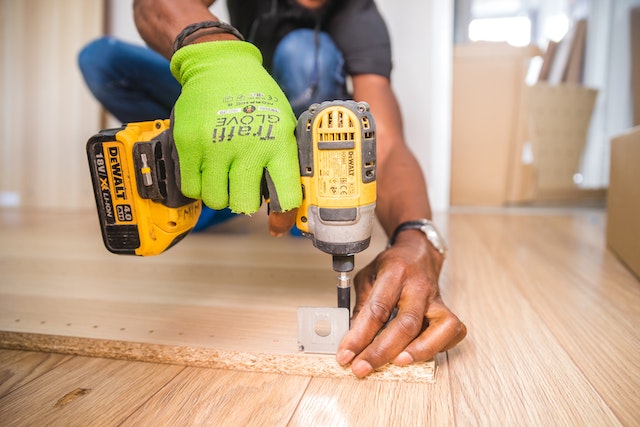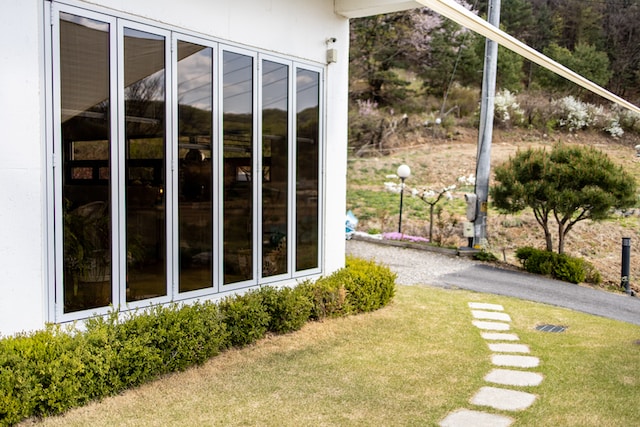Can I Fix My Bifold Doors Myself?
Bifold doors have become increasingly popular in modern homes for their space-saving design and aesthetic appeal. These versatile doors are commonly used to divide living spaces, connect indoor and outdoor areas, or conceal closets and utility rooms.
But like any other home feature, bifold doors may encounter issues over time. When problems arise, homeowners often wonder whether they can fix their bifold doors themselves or if they should call a professional.

Understanding bifold doors
Before delving into DIY fixes, it's essential to understand the basic components of bifold doors vs sliding doors. Bifold doors consist of two or more door panels that are hinged together. These panels fold in on themselves when opened, allowing for a compact, space-saving solution.
The key components of bifold doors include:
Panels
These are the individual door segments that fold together when the door is closed and unfold when opened.
Hinges
Hinges connect the panels and allow them to pivot as the door is opened or closed.
Tracks
Tracks are the channels in which the doors slide, ensuring smooth operation.
Rollers
Rollers are attached to the tops of the doors and glide along the tracks, facilitating the opening and closing of the doors.
Hardware
Hardware includes handles, knobs, and locks, which help secure the doors and provide a means of operation.
Common Bifold Door Problems
Bifold doors, like any moving parts in a home, can experience a range of issues over time. Some of the most common problems include:
Sticking or binding
Bifold doors may stick or bind, making them difficult to open or close smoothly. This issue often results from misaligned panels or tracks.
Off-track doors
If the rollers or tracks become damaged or misaligned, the doors can come off-track, leading to uneven and problematic operation.
Squeaking or noisy operation
Squeaking or noisy operation can be caused by dirty or dry rollers, hinges, or tracks. This issue can be particularly annoying and disrupt the peace in your home.
Loose or missing hardware
Over time, hardware like handles, knobs, or locks may become loose or even go missing. This not only affects the appearance but also the functionality and security of the doors.
Warping or damage to panels
Bifold door panels can warp due to changes in humidity or physical damage, which can impact their ability to fold and function correctly.
Alignment problems
Proper alignment of the panels is crucial for smooth operation. If the panels are not aligned correctly, it can lead to issues like uneven gaps or difficulty in closing the doors properly.
DIY Fixes for bifold doors
Now that we've identified common bifold door problems, let's discuss whether you can tackle these issues yourself:
Sticking or binding
Sticking or binding doors are often caused by misaligned tracks or panels. You can try adjusting the hinges and tracks to realign the panels. Tighten any loose screws and lubricate the tracks with silicone spray to reduce friction. If the problem persists, you may need to replace the damaged tracks or hinges.
Off-track doors
If your bifold doors have come off-track, carefully lift the doors back onto the track by sliding the rollers into the channel. This may require removing the door panels temporarily. Ensure that the rollers and tracks are clean and free from debris. If the doors repeatedly come off-track, consider replacing the damaged rollers or tracks.
Squeaking or noisy operation
Squeaking or noisy bifold doors can often be resolved by lubricating the rollers, hinges, and tracks. Apply a silicone-based lubricant to these components to reduce friction and noise. Be sure to clean off any dirt or debris before applying the lubricant.
Loose or missing hardware
If you have loose hardware, such as handles or knobs, tighten them with a screwdriver or wrench. If hardware is missing, you can purchase replacement parts at your local hardware store and install them yourself. Ensure that the new hardware matches the style and size of the existing pieces.
Warping or damage to panels
Repairing warped or damaged panels may be more challenging and may require carpentry skills. If the warping is minor, you can try using clamps to gently reshape the panels. For severe damage, it's advisable to consult a professional carpenter or consider replacing the affected panels.
Alignment problems
Properly aligning bifold door panels is crucial for smooth operation. You can adjust the alignment by loosening the screws on the hinges, repositioning the panels, and then tightening the screws again. This may require some trial and error to achieve the correct alignment.
When to call a professional
While many bifold door issues can be resolved through DIY efforts, there are situations where it's best to call a professional:
Severe damage
If your bifold doors are severely damaged, such as significant warping or structural issues, it's best to consult a professional carpenter or door specialist. They can assess the extent of the damage and recommend the appropriate repairs or replacements to ensure your home & bifold doors are safe and secure.
Electrical or mechanical issues
If your bifold doors are motorised or have complex electrical components, it's essential to hire a professional technician with expertise in these systems to diagnose and repair any issues.
Safety concerns
If you're uncertain about the safety of your DIY repairs or if you encounter unexpected problems during the process, it's safer to call a professional to avoid accidents or further damage.
Warranty considerations
If your bifold doors are still under warranty, attempting DIY repairs may void the warranty. Check the terms of your warranty and consult the manufacturer or an authorised service provider for repairs covered by the warranty.

Tips for successful DIY bifold door repairs
If you decide to tackle bifold door repairs yourself, follow these tips for a successful outcome:
Safety first
Always prioritise safety. Use appropriate safety gear, such as gloves and safety glasses, when working with tools or chemicals.
Gather the right tools
Make sure you have the necessary tools, including screwdrivers, wrenches, clamps, lubricant, and replacement hardware.
Read instructions
Consult the manufacturer's instructions or user manuals for guidance on maintenance and repairs. This can provide valuable insights specific to your bifold door system.
Take your time
Rushing through repairs can lead to mistakes. Take your time to carefully assess the issue, plan your approach, and execute the repairs methodically.
Document the process
Take photos or notes as you work through the repair process. This can be helpful if you need to reverse any steps or reference them in the future.
Seek assistance when needed
Don't hesitate to seek help or advice from professionals or knowledgeable individuals if you encounter challenges beyond your expertise.
Upgrade your bifold doors with Flying Doors
Do your bifold doors need a little bit of TLC? If you’ve given them some DIY servicing yourself, and they’re still in need of a refresh, it could be time to invest in some new ones.
At Flying Doors, you can use our ‘build your own’ tool to customise your own bifold doors to meet your property’s requirements. We also offer an impressive 10-year guarantee and special next-day delivery too, so you’ll know exactly where your new doors are.
Add value to your home and upgrade your bifold doors with Flying Doors today.